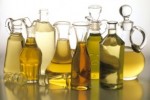There are many articles and blogs over the internet that debate the question if High Fructose Corn Syrup (HFCS) is associated with the high rate of obesity and diabetes that we are observing today. I feel a lot of the controversy is due to the fact that the increased use of HFCS parallels the increase of obesity, type 2 diabetes, heart disease and other metabolic disorders in the US. Yet, the science community can’t substantiate HFCS causes it. Or can they? It depends how you look at the studies. Let’s explore this question…
History of HFCS
HFCS was developed in the 1960s as a cheaper alternative to sucrose. Because of the similarity in physical and functional properties, HFCS became more popular in the food industry. Since the 1970s, HFCS usage has skyrocketed; in some sources, it has been estimated that the consumption of HFCS increased over 1000 times. In the United States, consumption peaked around 2004 and has trended downward since. This is not to say HFCS is not highly used in the food industry; worldwide HFCS is still the predominant sweetener but is less used since 2004. What happened that year? Scientists, Bray, Nielsen and Popkin, hypothesized that intake of High Fructose Corn Syrup could potentially create many adverse health effects like obesity, diabetes 2, non-alcoholic fatty liver, hypertension and other health problems. Bray et al. based his hypothesis on a few arguments: First, Fructose is digested, absorbed and metabolized differently than Glucose, and the higher amount of Fructose in the HFCS may result in some health consequences. Second, the epidemiologic data that they got hold of represented the high rise of obesity since the 1970s (about the time when HFCS use started rising) suggesting that there could be an association between a new food substance that we started using and the obesity epidemic. Third, Fructose does not raise blood Glucose as Glucose does, neither is it involved in Insulin stimulation or Leptin activation that is associated with increased appetite which leads to consumption of higher amounts of calories. Additionally, they found an association between higher intakes of HFCS containing beverages and prevalence of obesity in the United States.
Increased panic in the US slowed down the rise of HFCS use in some of the Health Concern food companies. Today, after years and years of studies that researched this topic, we still don’t have a solid answer to this question.
The Controversy
The main argument you hear for HFCS is that your body doesn’t know the difference. To quantify this, first, we must look at what is HFCS compared to other sugars and how the body metabolizes these sugars.
Fructose Corn Syrup is Similar to Sucrose
Sucrose is a disaccharide built from molecules, glucose and fructose 50:50 percent. HFCS is also a disaccharide that is made of the same two molecules of glucose and fructose, but instead it is 55 percent fructose, 42 percent glucose and 3 percent other. This type of HFCS is named HFCS-55. There is another type of HFCS-42 that contains 42 percent fructose, and 53 percent glucose and the rest are polymers that are hydrolysable to glucose (1). This paper will focus on the HFCS-55.
Metabolism Differs
One of the biggest arguments against HFCS is that it must be a health concern because of the higher amount of Fructose in it that is absorbed differently than glucose. Glucose in portal circulation finds a receiving cell, and is received by GLUT-4 that is insulin dependent, whereas the fructose is received by GLUT-5 that is not insulin dependent and that is also absent in the pancreas (where β cells are found) and is absent in the brain (where the satiety signals are). Thus, when glucose is absorbed into the blood, it turns on insulin which in its turn also activates Leptin and sends satiety signals to the brain. Glucose converts to the Glycerol-6-phosphate and can be synthesized to glycerol backbone. Fructose has a different route. It is absorbed further down in duodenum and jejunum. After getting into portal circulation, it is sent straight to the liver where it can be either converted to the glucose and sent to the circulation to feed cells, or instead it could stay in the liver, building fatty liver ( by hepatic lipogenesis). Fructose does not stimulate Insulin secretion, probably because β-cells in the pancreas don’t have GLUT-5 transporters for fructose to enter. This is a very significant part of metabolism that helps to turn on negative feedback to give us a satiety feel by activation of Insulin and Leptin (2,4).
Hormones and Appetite
Insulin has a direct effect on inhibition of food intake. It also can have indirect effect on reducing food intake by activating Leptin hormone. Release of leptin reduces appetite. It is known that people who have reduced or no leptin concentrations will have increased hunger all the time and therefore will be overweight and obese. Leptin also increases energy expenditure. If there are lower calorie meals consumed, Leptin can regulate Thyroid hormone to reduce energy expenditure. Once again, Insulin is turned on by glucose and not the fructose molecule. When fructose is consumed, Insulin cannot directly or indirectly reduce food intake which means there is no satiety signal reaching the brain and a person will overeat. Extra consumed fructose will stay in the liver, increasing the risk of having non-alcoholic fatty liver (2).
Fructose Metabolism Research
Purnell and Fair reviewed several studies that objectively verified the metabolism of fructose. In their comment, they presented recent meta-analysis which showed participants that consumed high fructose corn diets gained weight significantly compare to their control groups. Other studies showed that injection of fructose into the homeostatic appetite control in the hypothalamus or by feeding rats with fructose increased food intake causing body weight gain. Page et al., in their study, demonstrated through MRI that the hypothalamic brain signaling is different in response after glucose versus fructose intake. The study showed the fullness and satiety with glucose intake but not with fructose, which supports the metabolic pathway hypothesis. Magnetic Resonance Imaging also verified that several brain regions have higher perception of fructose sweetness compare to glucose (3).
HFCS Does Not Contain Only Fructose
There were several animal and human studies conducted that showed increased risk of obesity and diabetes in participants that were treated with fructose (1). Although this is a true statement it is important to remember that similarly to Sucrose, HFCS has both molecules –glucose and fructose.
Many studies that fueled the health concern related to higher intake of fructose are based on misrepresentation of the reality, giving their treatments as high amounts of isolated fructose molecules (1). Consumption of fructose in an isolated form does not happen in human diets. Therefore it is useless to associate them to HFCS. It is possible that when we consume HFCS in highest amounts that 5% of Fructose may influence us some way, but when so much sugar is consumed, it is less a matter of what sugar because the amount of calories that are consumed will probably overweigh the possible damage of small amounts (5%) of Fructose. Additionally, Fructose will be turned to Glucose in the liver if there is not enough Glucose in the body. Once again, if you are eating too much, it may stay in your liver.
Even if we account for the differences in chemical structure and metabolism of HFCS compared to Fructose and Glucose, we are still left with some additional compelling arguments.
Inconsistent Observation
According to Klurfeld, consumption of HFCS has declined during the last 10 years, yet obesity keeps rising in most countries and even those that do not consume as much HFCS or any at all, such as Mexico, Australia and Europe (1). So, saying that HFCS is the leading compound to obesity because we got fatter since the 1970s, is not a valid argument against HFCS.
Effects Differ Based on Application and Use of HFCS
Bray pointed out that HFCS in Beverages does not act on us similarly to HFCS in solid foods. In a rodent model, scientists treated rodents’ water with HFCS. They concluded that rodents that had sweetened water could not prevent positive caloric balance by eating fewer calories from solid foods. Surprisingly, when scientist switched HFCS to the solid foods the results were not the same. Thus, sweetened HFCS beverages but not HFCS foods increased their positive calorie balance, leading to obesity (2).
Furthermore, Ventura et al identified 30% higher amounts of fructose content in the popular sweetened drinks than would be otherwise with sucrose, suggesting that HFCS that is in sweetened drinks may contain even higher amounts of fructose in beverages (4). One thing is not clear, what purpose would be to add higher amounts of Fructose into the beverage, knowing that Fructose (and HFCS) is sweeter than Sucrose.
Good Science or Bad Science?
There are many studies that implicate the consumption of HFCS with negative health effects. Many look for associations or don’t adequately account for many dependent variables. And some don’t even ask the right questions or even study HFCS or Sucrose but Fructose instead.
Proliferation and Domination of HFCS in the Processed Food Industry.
From 1970 to 1990, the consumption of HFCS increased more than 1000 times, exceeding such changes in any other processed food groups. It has been estimated that over 61% of foods and beverages contain HFCS. Two thirds of all HFCS is consumed as beverages. Additionally, it was found that during 1994-1998 energy intake increased 318 Calories per day per US resident. By the late 1990s, 40% of caloric sweeteners sold in US contained HFCS (4). And it could be associated with the increased intake of sugary beverages and other sweets. Studies showed that fructose is sweeter than glucose. On a scale, if to set sucrose at 100, fructose would be 173 and glucose only 74. HFCS-55 was calculated to be 1.28 times as sweet as sucrose. Therefore it was suggested that this could be one of the reasons why the US population increased their intake of sweets and also can’t stop eating them because there is no signals of satiety with fructose, leading to obesity and diabetes (2). This may suggest that with the advent of HFCS, more and sweeter products were introduced to the market aggravating consumption behaviors that are negative rather than HFCS itself being bad.
Global Perspective
Michael Goran et al. commented that prevalence of Type 2 Diabetes and Obesity is increasing parallel to Western style foods that are high in calories. High refined carbohydrates, in particular sugars and HFCS beverages, are especially linked for risk of obesity. Goran et al. conducted a study looking over 43 countries data of BMI, caloric intake and sugar intake differences and whether or not that country uses HFCS. The analysis of this data revealed that all indicators of Diabetes were higher in those countries that use HFCS compare to those that don’t use HFCS. The differences became even stronger after they controlled for country estimates of BMI, total population, gross domestic product. The risk of Diabetes is 20% higher in countries that use HFCS (4).
In opposition to Goran’s interpretation of the data, it is really hard to imagine that Goran et al. could control for every single thing that differs between those countries in his data, such as different lifestyles: use of public transportation, walking, biking or driving a car to work, types of jobs that the public does, cultural differences can play a big role as well and many more. Different nations have different preferences of foods and usage of sugar for cooking in general. Some nations don’t go out and eat less processed foods in general. The countries on the list that do not use HFCS are India, Slovenia, Latvia, Uruguay, Ireland, Lithuania, Sweden, Luxembourg, Czech Republic, Austria, Cyprus, Estonia, Malta and Denmark, which are definitely industrialized countries, but maybe have different food palatability and preference of cooking, and some of them are much more active as well. Goran’s study is just a correlation and not a causation that must be treated accordingly.
Sweetened Beverages vs HFCS
There were many studies done that were using sweetened beverage consumption as a primary link to the HFCS health consequences. Lin et al. observed and surveyed Taiwan adolescents’ intake of sweetened drinks. To measure fructose, the research team collected uric acid which they explained is produced by the activation of fructokinase pathway in hepatocytes in the liver. A total 3784 participants’ data was collected. Data showed of all 3784 participants 87.7% were beverage consumers with 25% drinking more than 500 ml per day. Scientists concluded, as intake of sweetened beverages increased, there was an association of larger waist, hip circumference and increased body fat, BMI and uric acid. Those participants that consumed more than 500ml/day had highest levels of uric acid and increased risk of developing hyperuricemia compare to those that didn’t consume sweetened beverages. They also noticed that participants with higher BMI, had higher consumption of drinks, but it would be hard to say what could cause what in this case. It is possible they drink more because they are larger. They also observed that those students that consumed higher levels of sweetened beverages also smoked and consumed alcohol (5). This is interesting because it shows a correlation to self-indulging and abusive consumption behavior which can be addictive.
Although participants that consumed HFCS sweetened beverages were found to have higher uric acid together with larger waistlines, higher BMI, increased body fat and in those that consumed the highest amounts, high blood pressure, it would be misleading to think that sucrose would not also affect waistline, BMI, increase in body weight and fat and even increase BP. Bravo et al noted that these kind of findings can be confounded by the fact that in those that consumed sweetened beverages could have absolute body weight and total fat mass higher in general. However, this study has a huge limitation that focuses on beverage consumption. It implicates excessive empty caloric intake in beverages rather than ordinary intake of HFCS.
RDs recommend toreduce fruit juice consumption to one cup due to the high energy density and low nutritional value in those juices (9). So, the more sweetened beverages they consumed, the higher amounts of empty energy they had that was positively balanced and resulted as extra body fat.
S Bravo et al. conducted a 10 week study, treating 64 participants with milk containing HFCS or sucrose. The added sugar that was in the milk matched the levels of consumption of fructose in the 25th, 50th and 90th percentiles of the population. Participants’ fat was measured by MRI and liver fat measured using unenhanced computed tomography. The research team concluded that there were no change over the course of 10 weeks in participants fats in the livers or gluteus maximus muscles. Bravo et al. suggest that when HFCS is consumed as a part of balanced typical diet that maintains the weight of individual, fructose consumption in any amount does not promote fat storage in the liver or muscle(6). Once again, suggesting that the amount of sugar that is in addition to the daily caloric allowance is what matters. Studies like this should be treated with caution because of the limitation of the length of the treatment period. It is not known if there would be similar results after 6 months or even longer-12 months of this treatment. However, this study is interesting because though it uses a sweetened beverage, it is not an empty caloric one. It also used sucrose for comparison rather than just looking at fructose or HFCS. Consuming sugars with other foods or nutrients rather than alone in a beverage may affect study results which is consistent with Bray’s findings that HFCS beverages do not act on us similarly to HFCS in solid foods.
Another study has very strong findings to the opposition of HFCS. In this study, participants were divided into 4 groups and consumed one of 4 drinks (low fructose, high fructose, sucrose and high-glucose drinks) during 4 weeks. The results indicate that compared to the high-glucose beverage, the low-fructose beverage showed higher activity of impairing hepatic insulin sensitivity, leading to non-alcoholic fatty liver. They also found that total LDL cholesterol was increased by fructose compare to glucose. Also free fatty acids were increased in the fructose consuming participants (7). The results of this study verified the metabolic path of the fructose, showing susceptibility to higher amounts of fat and fatty liver as described earlier. This study has several limitations –it used only 9 healthy participants and the study lasted only 4 weeks. A larger sample group and longer study duration is needed to determine the validity of these results. Additionally, the author didn’t disclose the comparison of sucrose to low or high fructose in the results. Sucrose may be just as harmful in sugary beverages.
Final Thoughts
HFCS debates have been going on probably over 7 years now. It is probably easier to believe that something is making us fatter than to believe that it is our actions which are responsible for how we look and feel. There are literally thousands of postings and blogs over the internet related to putative links between HFCS and metabolic diseases including obesity and T2DM. No wonder it is so easy for people to get confused about this subject. Even I, being a nutritionist, and knowing the pathway of absorption of glucose and fructose, thought that HFCS could be potentially causing some extra pounds and other health problems when consumed in large amounts. I thought I would find a better answer if I researched this topic and may say that we should cut down on HFCS instead. But, after heavy reading of research pages, I came to the conclusion that there is no evidence that HFCS is directly affecting our health. It doesn’t mean it does not affect it at all – the processed food industry has included it in an all out effort to expand sweet low-nutrient cheap products that addict us to more and more sugar.
There are several studies that linked HFCS results to beverage intake, I believe if they added the same amounts of of sucrose into water and treated their participants with it – it would give them similar results. An examination of sodas and processed fruit juices may be more practical as they represent two thirds of the HFCS market. These are products which people can consume and exceed their caloric needs while achieving little nutrition very easily and unknowingly. What is more scary, it may be possible using HFCS to create drinks with higher concentrations of sugar than one could possibly achieve using sucrose thereby creating a “super sugar beverage” that would allow rapid absorption of huge quantities of empty calories that would not be possible in nature. Perhaps some day, these drinks will be looked at in the same regard as a “drug” and regulated the same way alcohol and tobacco are now. I would personally advise treating these beverages as such and using them accordingly.
The questions we should be asking: How has HFCS affected processed food offerings? How has it affected our dietary habits? How has it affected our caloric intake? Instead we wasted time separating it to fructose and glucose for testing. I think researches made many wrong choices to answer the question, and after 7 years or more we still don’t know the answer to this question. I tend to agree with J Nelson, and I would say we have no evidence to support health effects or benefits from HFCS, I would recommend just to cut back on sugar, especially sugary beverages, if one worries about health, obesity and diabetes effects from HFCS.
References:
- DM Klurfeld et al. Lack of evidence for high fructose corn syrup as the cause of the obesity epidemic. IJO. 2013;37:771-773.
- G A Bray et al. Consumption of high-fructose corn syrup in beverages may play a role in the epidemic of obesity. AJCN 2004; 79:537-543.
- JQ Fructose Ingestion and Cerebral, Metabolic, and Satiety Responses. JAMA 2013; 309:85-86.
- Goran MI. High fructose corn syrup and diabetes prevalence: A global perspective. Global Public Health. 2013;8:55-64.
- WT Lin et al. Effects on uric acid, body mass index and blood pressure in adolescents of consuming beverages sweetened with high-fructose corn syrup. IJO.2013;37:532-539.
- S Bravo et al. Consumption of sucrose and high-fructose corn syrup does not increase liver fat or ectopic fat deposition in muscles. Nutrition, and Metabolism, 2013; 38: 681-688.
- GA Bray et al. Potential Health Risks From Beverages Containing Fructose Found in Sugar or High-Fructose Corn Syrup. Diabetes Care.2013; 36:11-12.
- Jennifer K. Nelson, R.D., L.D.What is high-fructose corn syrup? What are the health concerns?http://www.mayoclinic.com/health/high-fructose-corn-syrup/AN01588
- Judith Brown, Nutrition Through the Life Cycle, 4th edition, 2010







